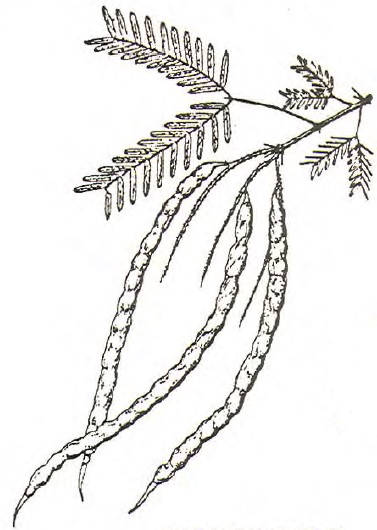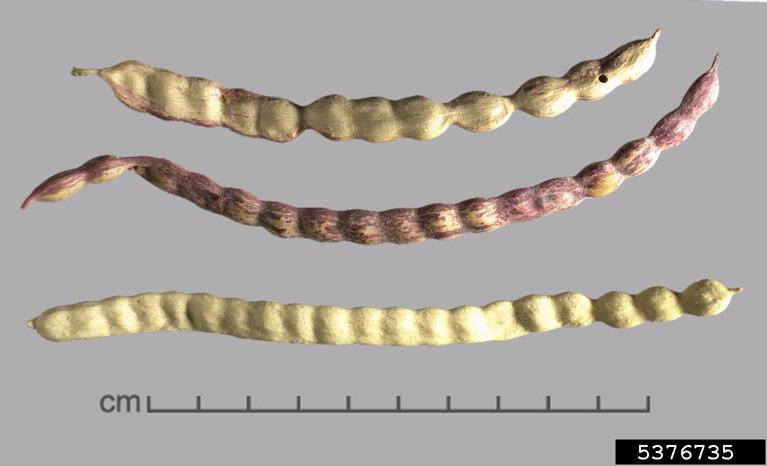 Give Mesquite Trees a Chance - September 4, 2013 Jeff Schalau, Agent, Agriculture & Natural Resources University of Arizona Cooperative Extension, Yavapai County Mesquite trees are often removed from residential areas without consideration of their many virtues. Sure, they are spiny and often shrubby in form, but they also require little or no irrigation, provide food and cover for wildlife, attract bees and other interesting insects, and provide nesting sites and habitat for migratory songbirds. In other words, they have value that extends far beyond being a charcoal source for your backyard barbeque. Velvet mesquite (Prosopis velutina) is the native species found in the Verde Valley. It grows as a tree on the floodplains and terraces near the Verde River and its tributaries. It often becomes shrubbier where it is found on slopes and rocky areas. Mesquite has the ability extract water from deep within the soil and where it grows near rivers and streams, it can also have a two-tiered root system: one shallow and one deeper (near groundwater). In Yavapai County, mesquites are rarely seen above the 5,000 feet elevation level. Mesquite bosques (Spanish for “forests”) once lined the Verde River on the remnant floodplain terraces. Some remnant bosques are still present along the Verde and in these areas, mesquites trees can be up to 30 feet tall. Alteration of riparian areas and development has greatly decreased the number and overall acreage of mesquite bosques across Arizona. In some areas where mesquite bosques have been removed, invasive woody species such as tree of heaven, saltcedar, and Russian olive have replaced them. Mesquites are also legumes (relatives of beans and peas) which have the ability to “fix” atmospheric nitrogen increasing nitrogen available to plants in the soil. Here, legume roots become associated with beneficial soil bacteria (Rhizobium sp.) which have the ability to convert inert nitrogen gas (78% of earth’s atmosphere) to a form that plants can use. In essences, they fertilize themselves and neighboring plants through this symbiotic process. This process is also utilized by many gardeners when they plant nitrogen fixing cover crops to enrich garden soil. Clusters of fragrant cream colored mesquite flowers bloom in the late spring – in fact, many vegetable gardeners wait until the mesquite trees bloom to plant warm season vegetable crops. Honeybees are often brought into mesquite stands to gather nectar to make flavorful, light-colored honey. The flowers develop into seedpods and ripened seeds become hard shelled beans. These beans are valuable wildlife and livestock forage. The mature beans can be ground into sweet flour. This flour tastes really good all by itself and makes an excellent addition to cookies, pancakes, and cornbread. I have included a link to mesquite bean milling, purchasing, and cooking information with the on-line version of the column. Other Arizona native mesquites are honey mesquite (Prosopis glandulosa) and screwbean mesquite (Prosopis pubescens). Both species are found at lower elevations than velvet mesquite, but are suitable for planting below 4,000 feet elevation and would be an excellent choice for drought tolerant landscaping in Arizona. Honey mesquite is popular in the nursery trade as it becomes an attractive, almost stately, tree. Screwbean mesquite has a twisted branching habit and an attractive, twisted seedpod. These are less common in nurseries. Avoid the Chilean mesquite hybrids as they will not tolerate our winter temperatures and are not as tasty as our natives. Urban legends sometimes say that mesquites harbor Texas root rot (Phymatotrichum omnivorum) also called cotton root rot. Texas root rot is a disease that is present in some areas of the Verde Valley and it can infect a broad range of host plants. Mesquite trees tend to tolerate the presence of Texas root rot. This does not mean that it harbors the disease, but since it is somewhat tolerant, the disease could be present and have little or no effect on the mesquite. When a more susceptible host is planted in these areas, it could succumb to the disease while mesquites continue to survive. Fruit and nut trees, roses, sycamore, cottonwood, ash, oleander, xylosma, and many other species are very susceptible to Texas root rot. So, I hope this column encourages readers to better appreciate mesquite trees. They are an excellent choice for drought tolerant landscaping, compatible with birds and wildlife, produce food, and have a lot of character. Follow the Backyard Gardener on Twitter – use the link on the BYG website. If you have other gardening questions, call the Master Gardener help line in the Camp Verde office at 928-554-8999 Ext. 3 or e-mail us at cottonwoodmg@yahoo.com and be sure to include your name, address and phone number. Find past Backyard Gardener columns or provide feedback at the Backyard Gardener web site: http://cals.arizona.edu/yavapai/anr/hort/byg/. Additional Resources Using the Western Honey Mesquite in a Southwest Landscape University of Nevada Cooperative Extension http://www.unce.unr.edu/publications/files/ho/other/fs8846.pdf Desert Harvesters Website Information on harvesting/milling mesquite beans and cooking with mesquite flour. http://www.desertharvesters.org/  Velvet mesquite (Prosopis velutina) bean pods (Julia Scher, USDA APHIS PPQ, Bugwood.org).
Velvet mesquite (Prosopis velutina) bean pods (Julia Scher, USDA APHIS PPQ, Bugwood.org). |